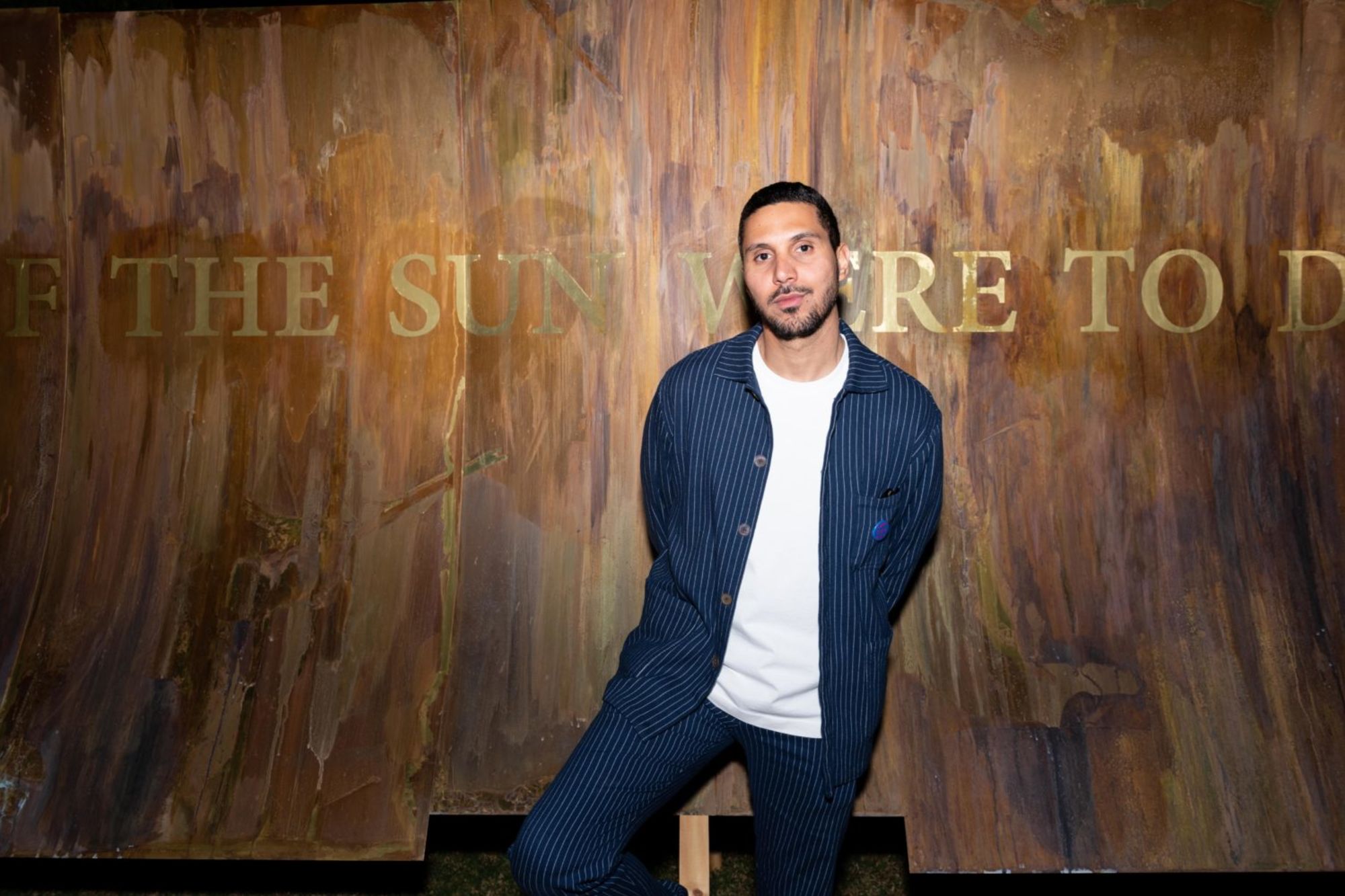Editor’s Note: Othman Lazraq is director of the Fondation Alliances and president of the Museum of Contemporary African Art Al Maaden (MACAAL) in Marrakech, Morocco.
My dad Alami Lazraq, founder of real estate firm Groupe Alliances, started collecting art from Morocco 40 years ago and then, gradually, began collecting pieces from the rest of Africa as well. He transmitted this passion to me, and now I am helping to evolve the collection as director of the Fondation Alliances and president of our Museum of Contemporary African Art Al Maaden (MACAAL) in Marrakech.
Each work tells its own story, and it’s important to give them all the opportunity to be heard. This is why MACAAL was born.
In a country like Morocco with a small art ecosystem, it’s crucial to support local artists, while inviting in the wider population. So through our exhibitions, residencies, workshops and community events, MACAAL provides crucial spaces where African artists can engage with the world.
Here are five works from our collection that truly embody the spirit of MACAAL.
‘Composition’ (1970) by Mohamed Melehi
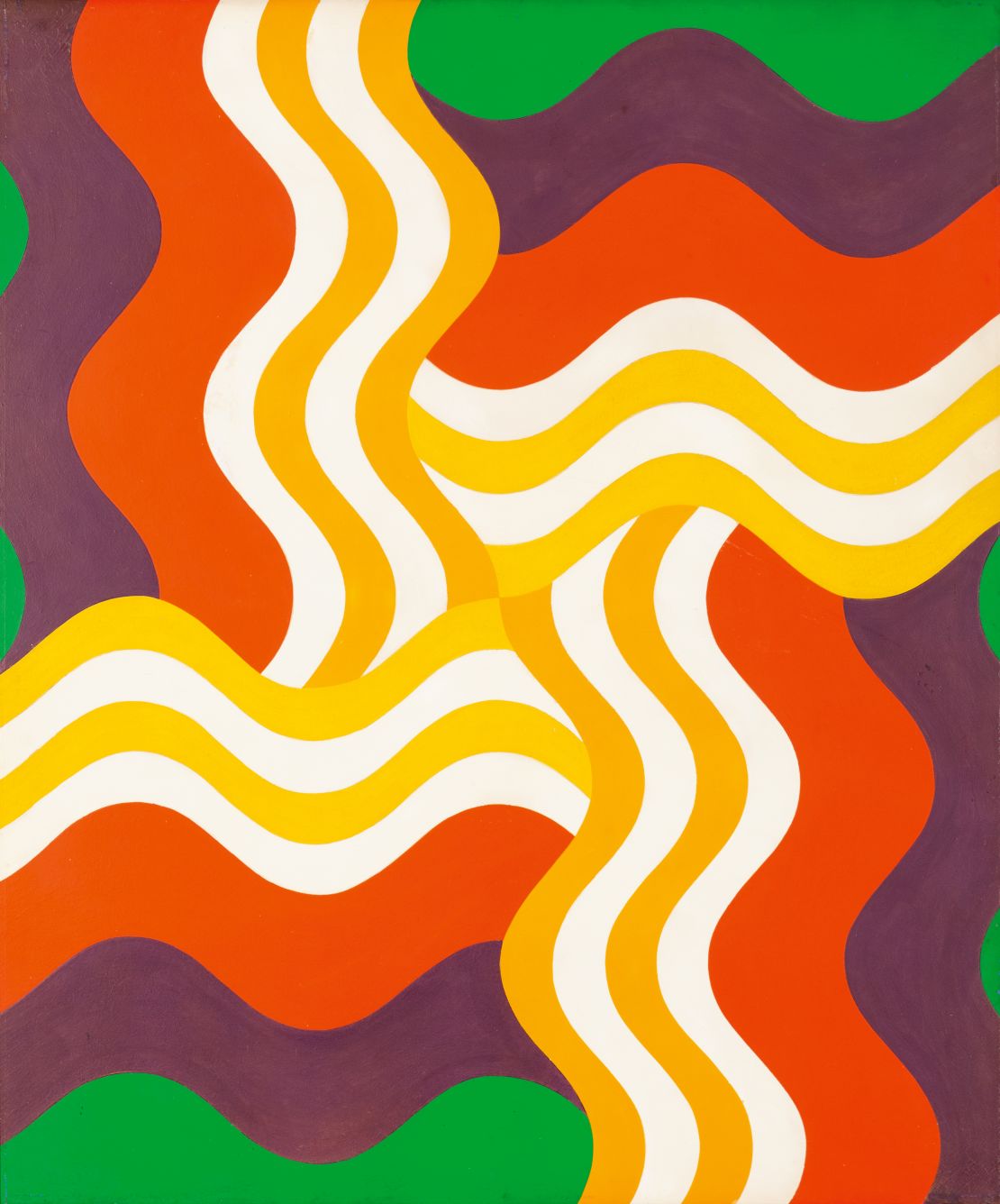
Mohamed Melehi is a pioneer of modern art in Morocco, known for his incredibly colorful abstract paintings featuring psychedelic waveforms. During the late 1950s and early 1960s he studied in Seville, Rome and then New York, where he exhibited at the Museum of Modern Art before moving back home in the late 1960s. He would go on to lead the Casablanca school – a group of Moroccan artists who famously exhibited their radical works for all to see in Marrakech’s Jemaa el-Fna Square in 1969.
“Composition” speaks to me as part of art history. The day I saw it, I knew that it had to be part of our collection so that we could continue to share Melehi’s legacy.
I’m very grateful to have witnessed the artist’s emotions as he walked into his retrospective at MACAAL last year, and saw many of his works together again. He told me he hadn’t seen our piece in several years and he was touched that it was back in good hands.
‘Untitled’ (2018) by Joy Labinjo
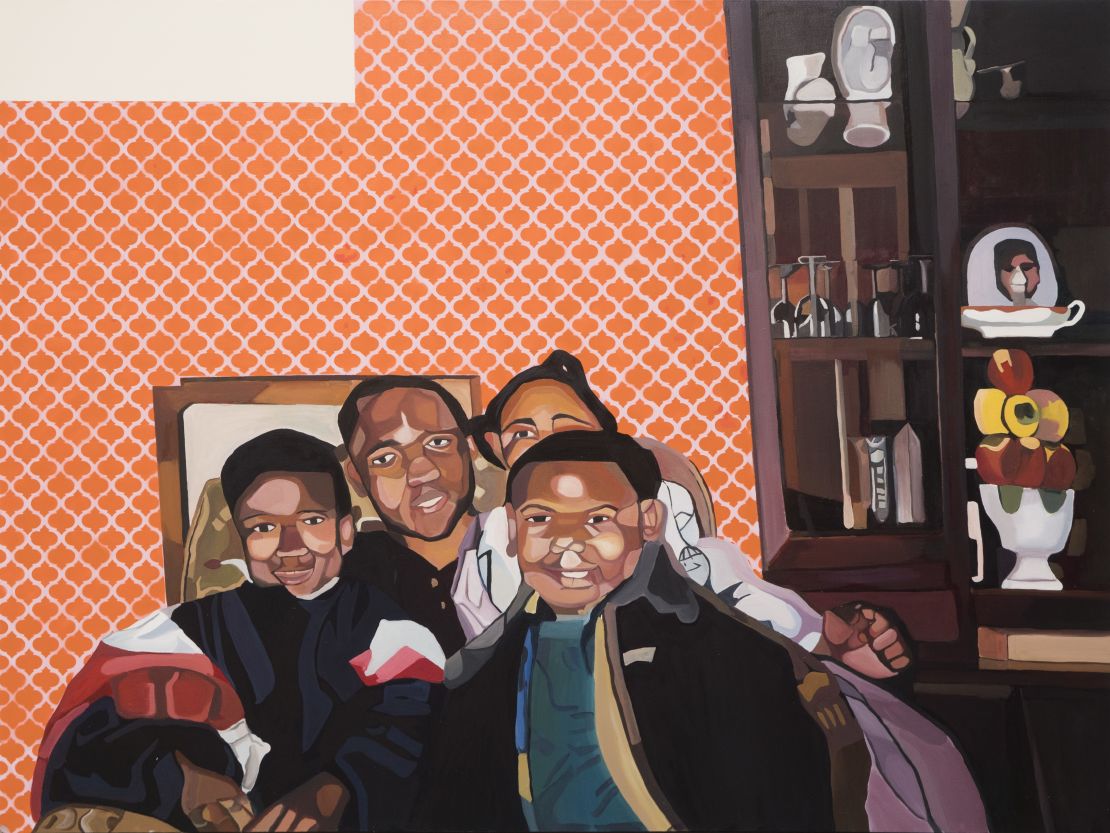
Joy Labinjo is a young British-Nigerian artist who bases her paintings on old photographs from her family’s albums. I love intimate life scenes in figurative paintings, and hers are done on very large canvases with bright color palettes.
This painting is of her cousins posing for the camera in front of an orange-tiled wall and glass shelves filled with china. It reminds me of my grandmother’s home.
These days we all rely on our camera phones and have thousands of images in the cloud that we never look at. We don’t print them or hang them. But the photos we keep in old boxes at the back of our closets are the real gems. My family has those boxes that we open up together from time to time. I love Joy’s work because it highlights the heritage we all share.
‘Imdiazen #2’ (2018) by M’Barek Bouhchichi
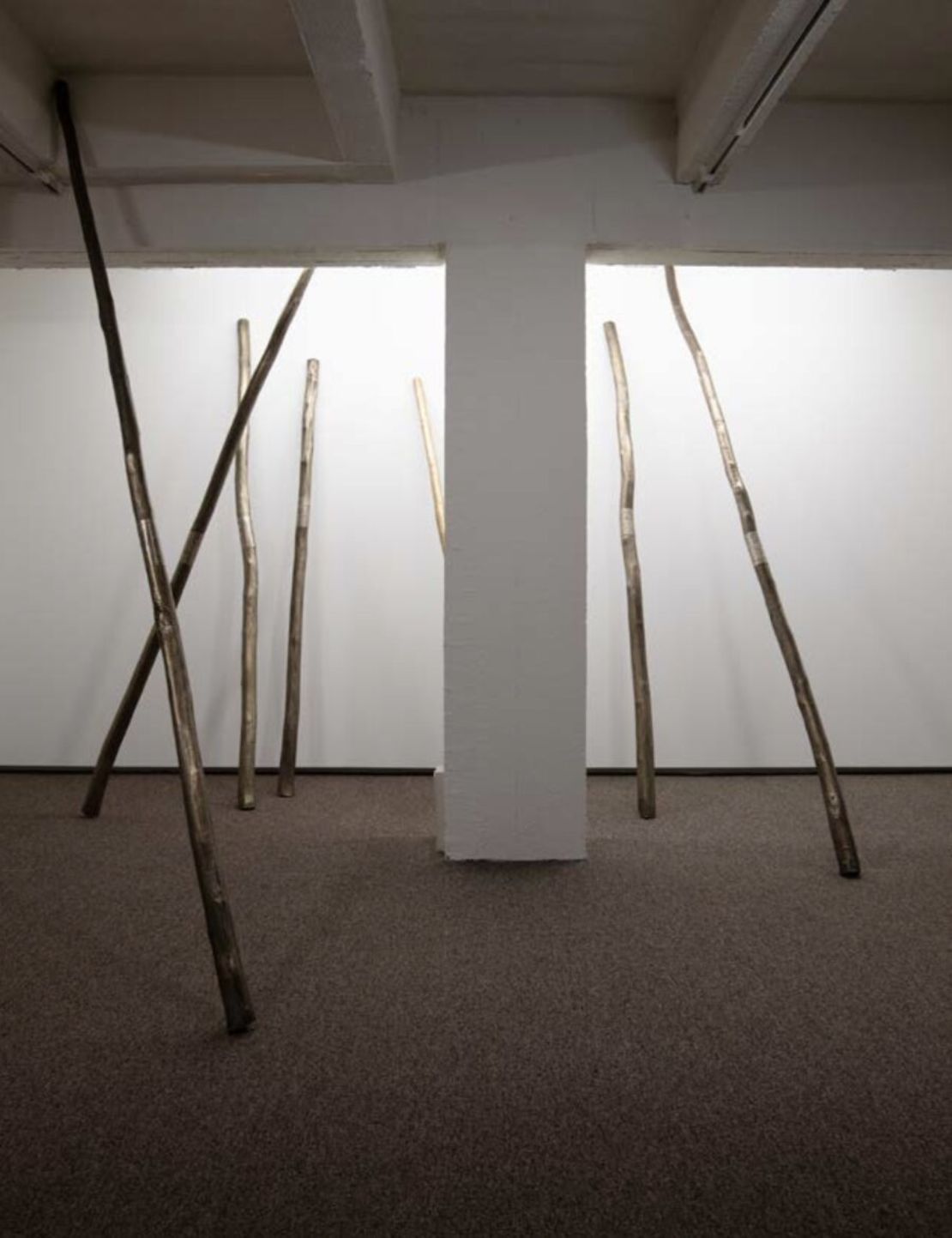
Besides being a great friend, M’Barek Bouhchichi is one of the most talented Moroccan artists of my generation. His multidisciplinary works fight against the norms of society while also exploring his inner self. He believes all humans are the result of multiple cultures, and that we must go beyond geographical borders and interact with the rest of the world.
This work draws on his research into the Berber peasant poet M’barek Ben Zida, who believed he could connect with the forces of nature, either to calm them or use them against others, and speak to animals, plants and insects.
Each of the seven tall branches, made from wood and copper, has a poem chiseled into them. The installation is impressive in size from afar, but once you get up close, you realise its sensitivity and ability to communicate. It’s a very delicate and elegant piece that reminds us of the incredible diversity of Morocco’s population through its use of vernacular verse.
‘Composition in Blue’ (2016) by Abdoulaye Konaté
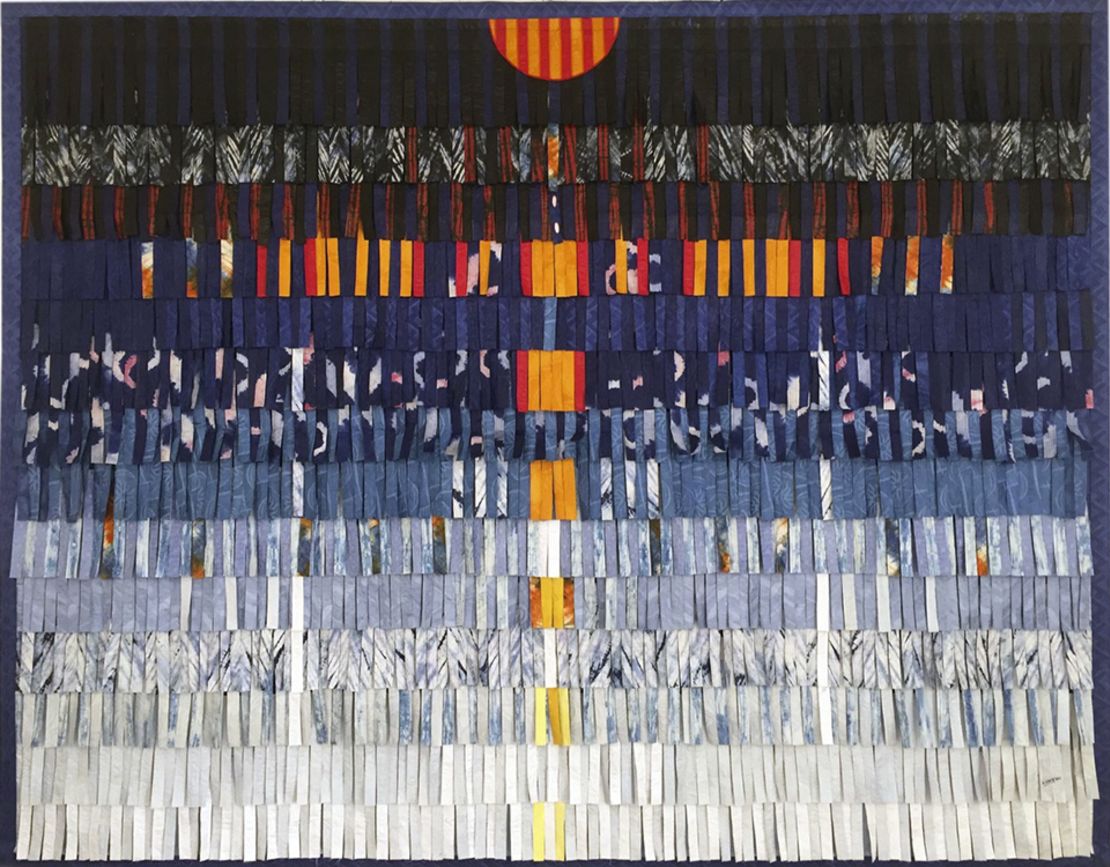
Abdoulaye Konaté is one of the masters of our continent. The Malian artist creates impressive textile-based installations that explore social, political and environmental issues, as well as concerns over the formal language of signs and aesthetics.
“Composition in Blue” has a beautiful gradient of blues, crafted from a Malian fabric that has been cut into tiny pieces to give it movement. It reminds me of a large bird’s feathers, and when the work faces you on a wall, the yellow center looks like the sun. It is a commemoration of textiles and refers to flags of communication and propaganda.
The first time I saw it I felt intimidated because of the power it carries. I’ve gotten to know Abdoulaye, who is such a humble human being, and now keep this work close to my heart.
‘Young Woman with Fishes’ (1973) by Baya Mahieddine
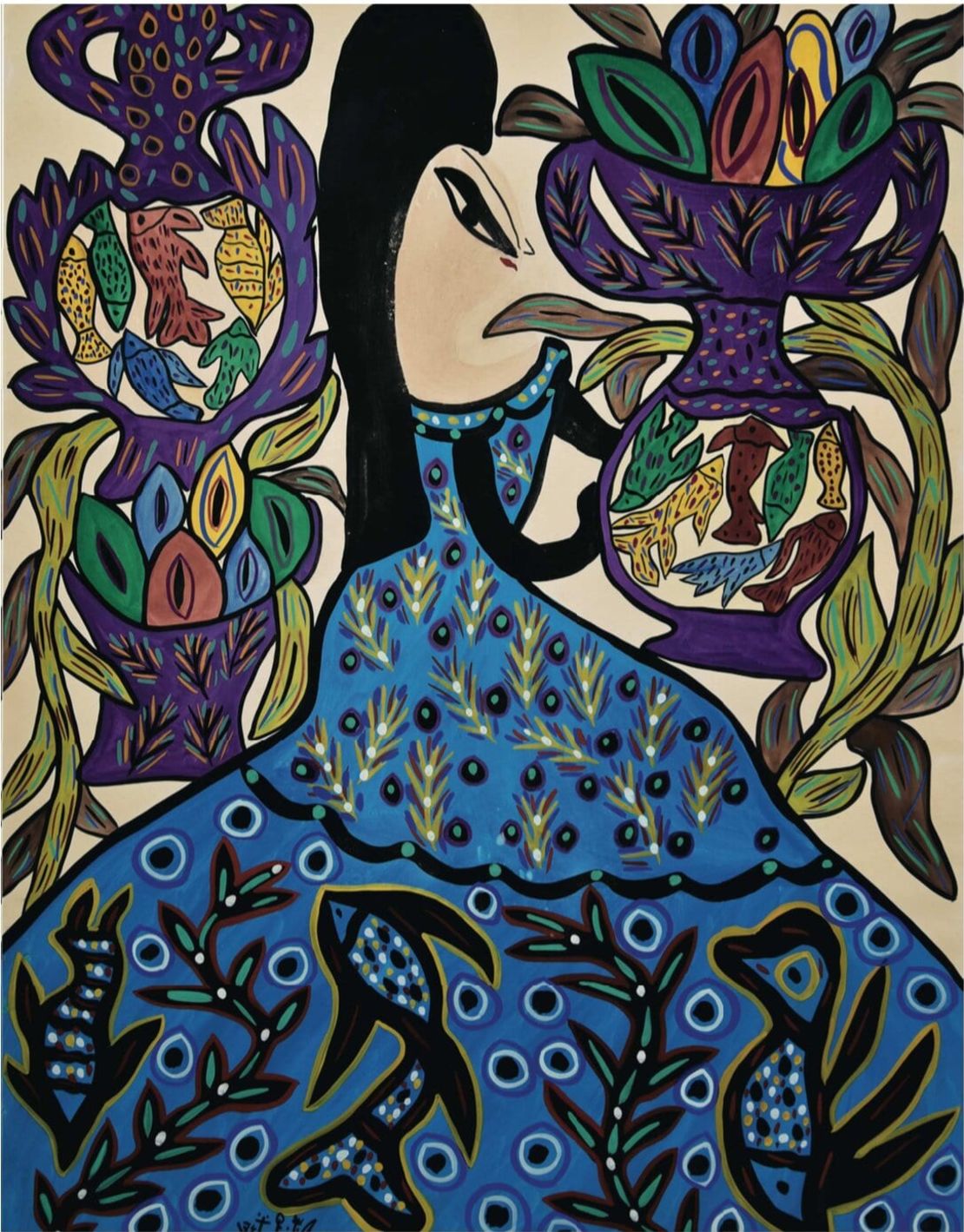
Baya Mahieddine was a self-taught Algerian artist who originally worked as a maid on a farm, immersed in the beauty of nature.
Mahieddine got her start modelling animals in clay, and in the late 1940s, she met a French gallerist who brought her to Paris to exhibit her works. Here, she met Matisse and Picasso and became interested in painting.
Soon after, she got married to an Algerian musician and had six children as his second wife. Living in a traditional household meant that she hid her paintings away for 10 years until he died, after which she was free to create again.
I have this painting at the entrance to my home so that it can be in my life every day. For me, the work is full of hope. The feminine palette of bright pink, turquoise and emerald acts as a symbol of the strong woman she wanted to be. It’s a message for future generations to believe in what they do and never give up on their dreams.
